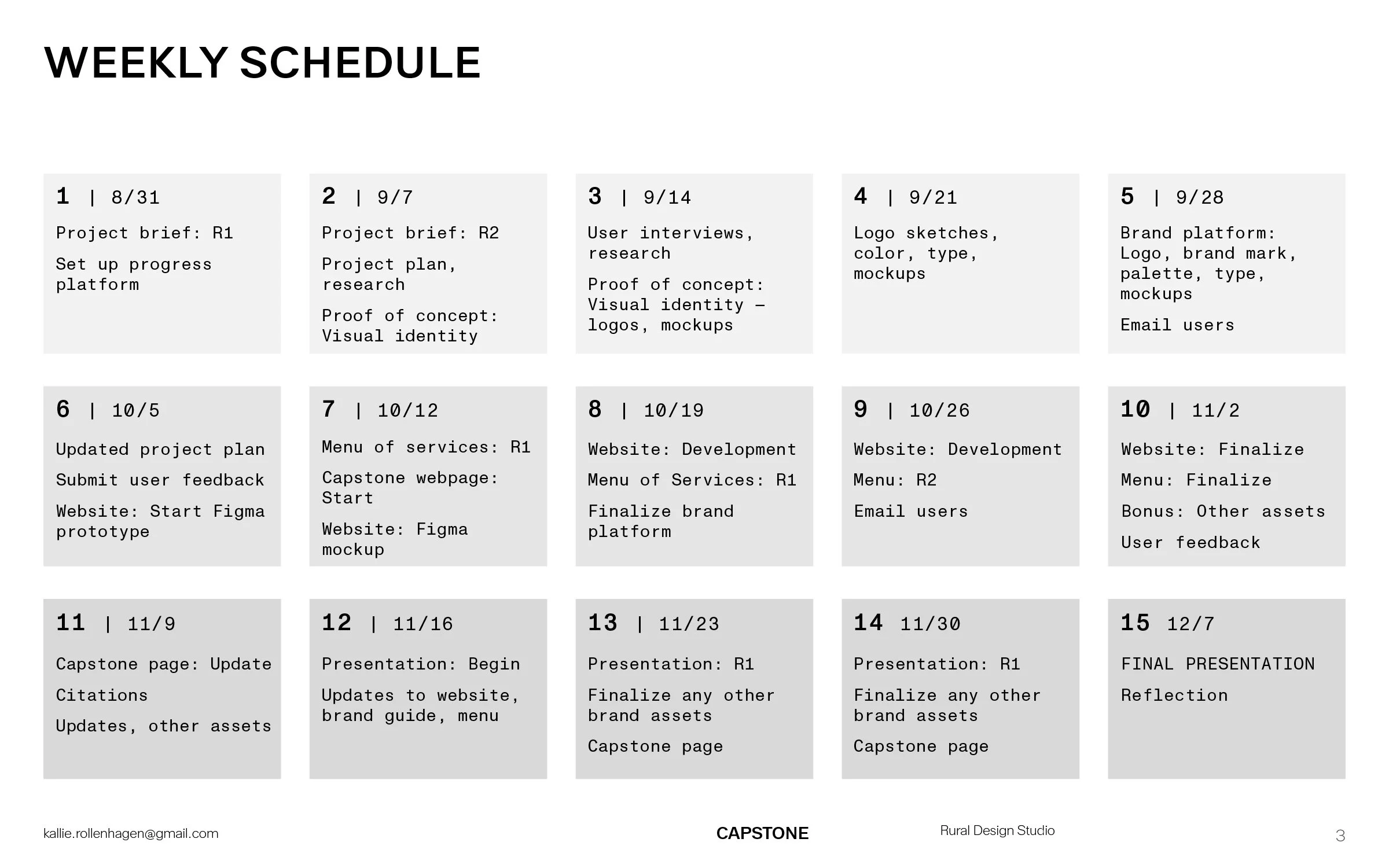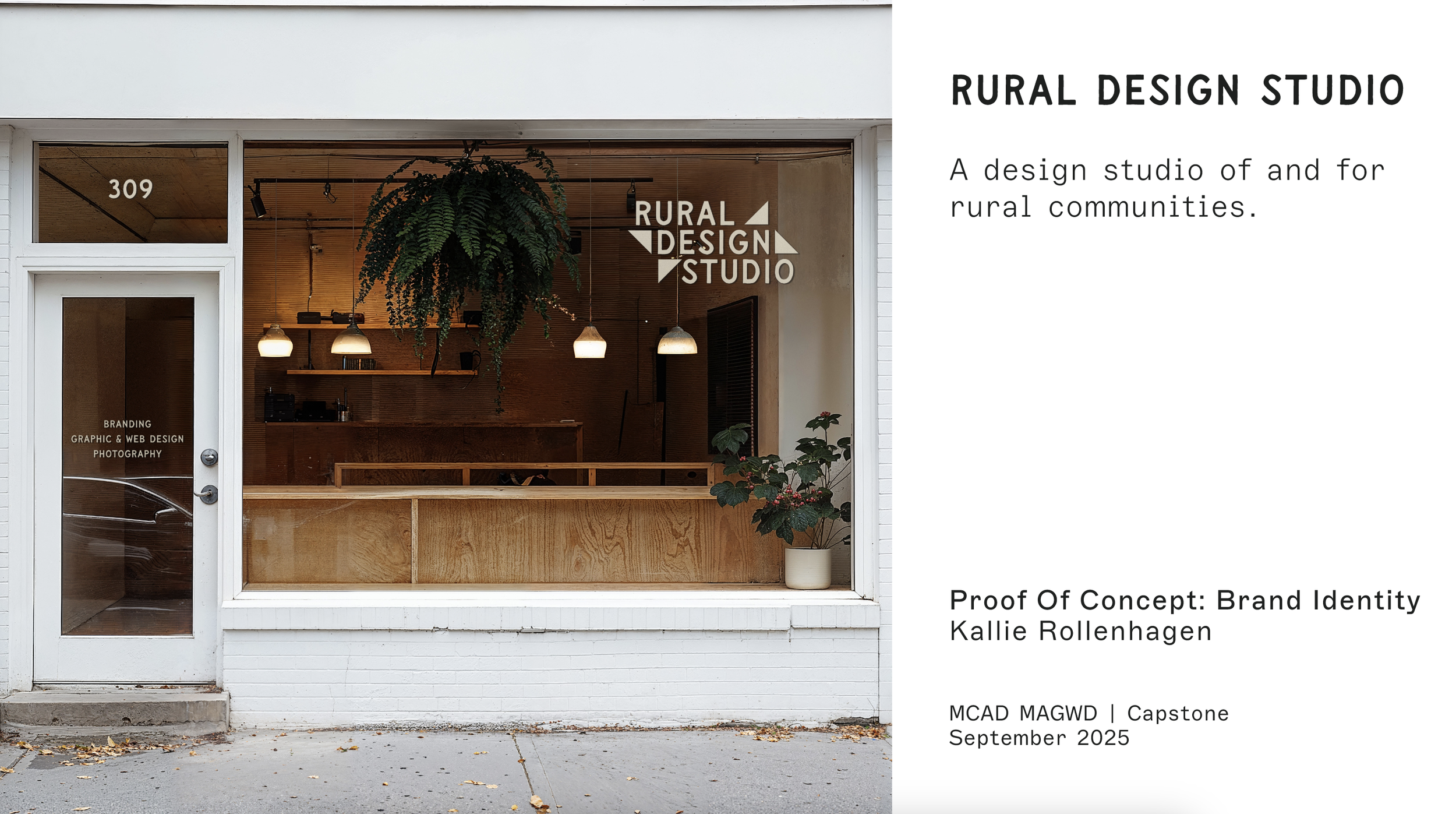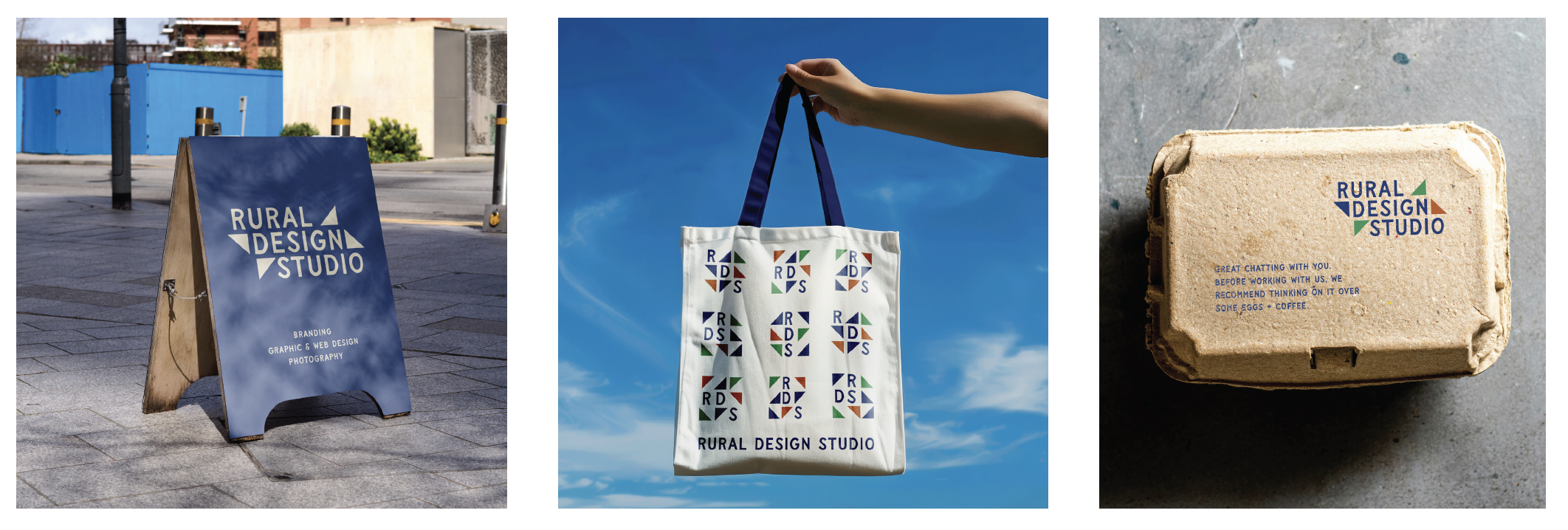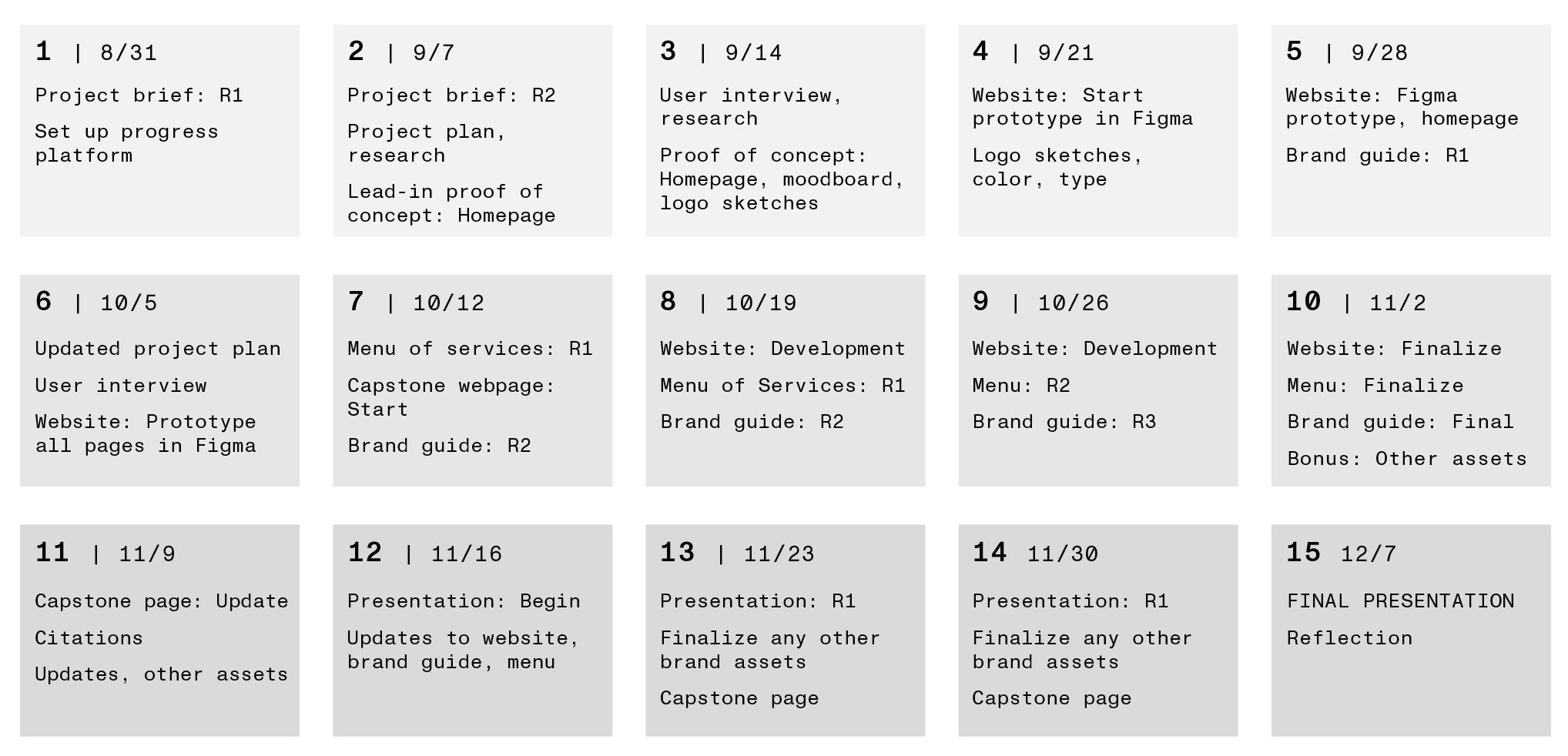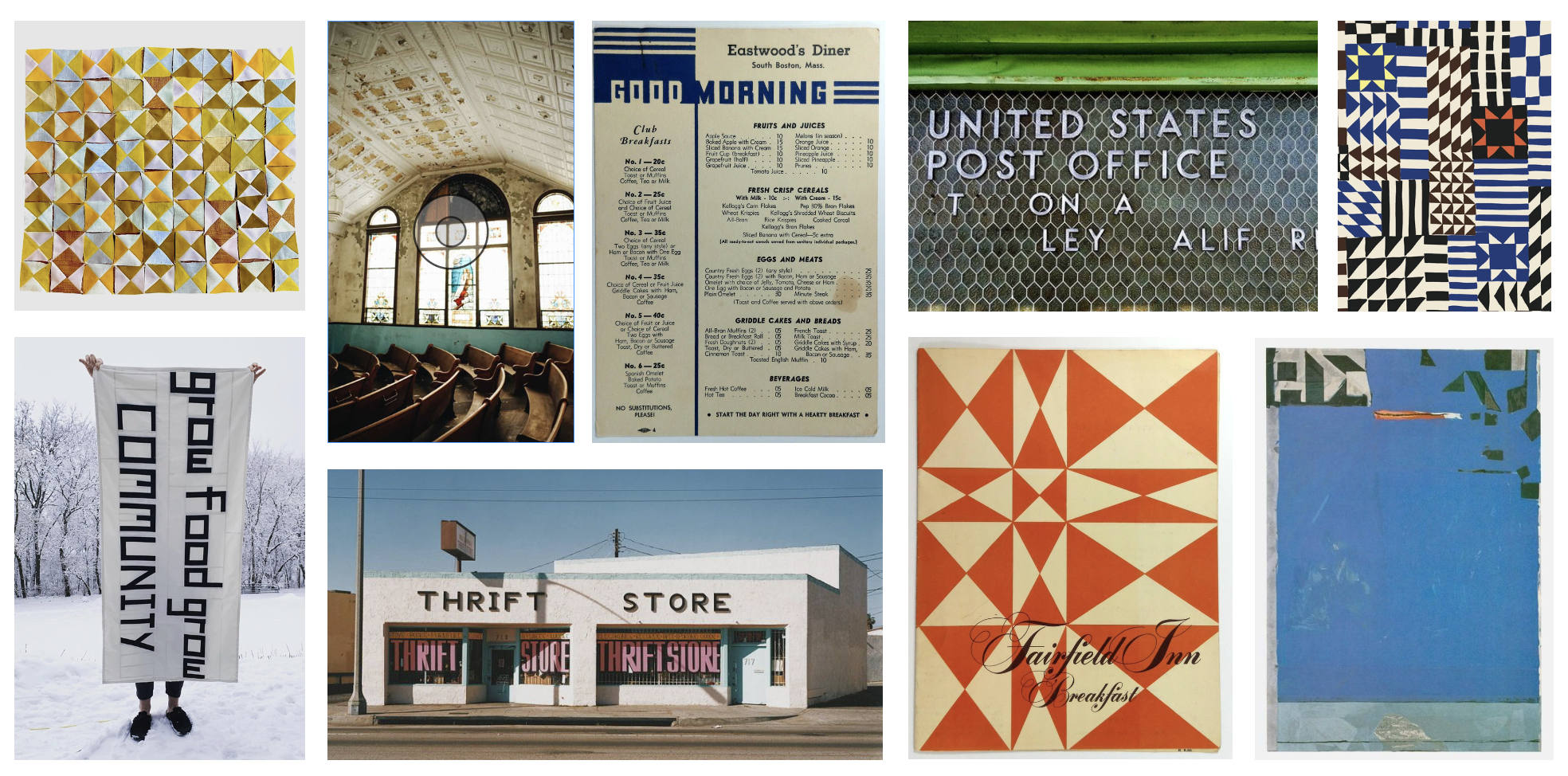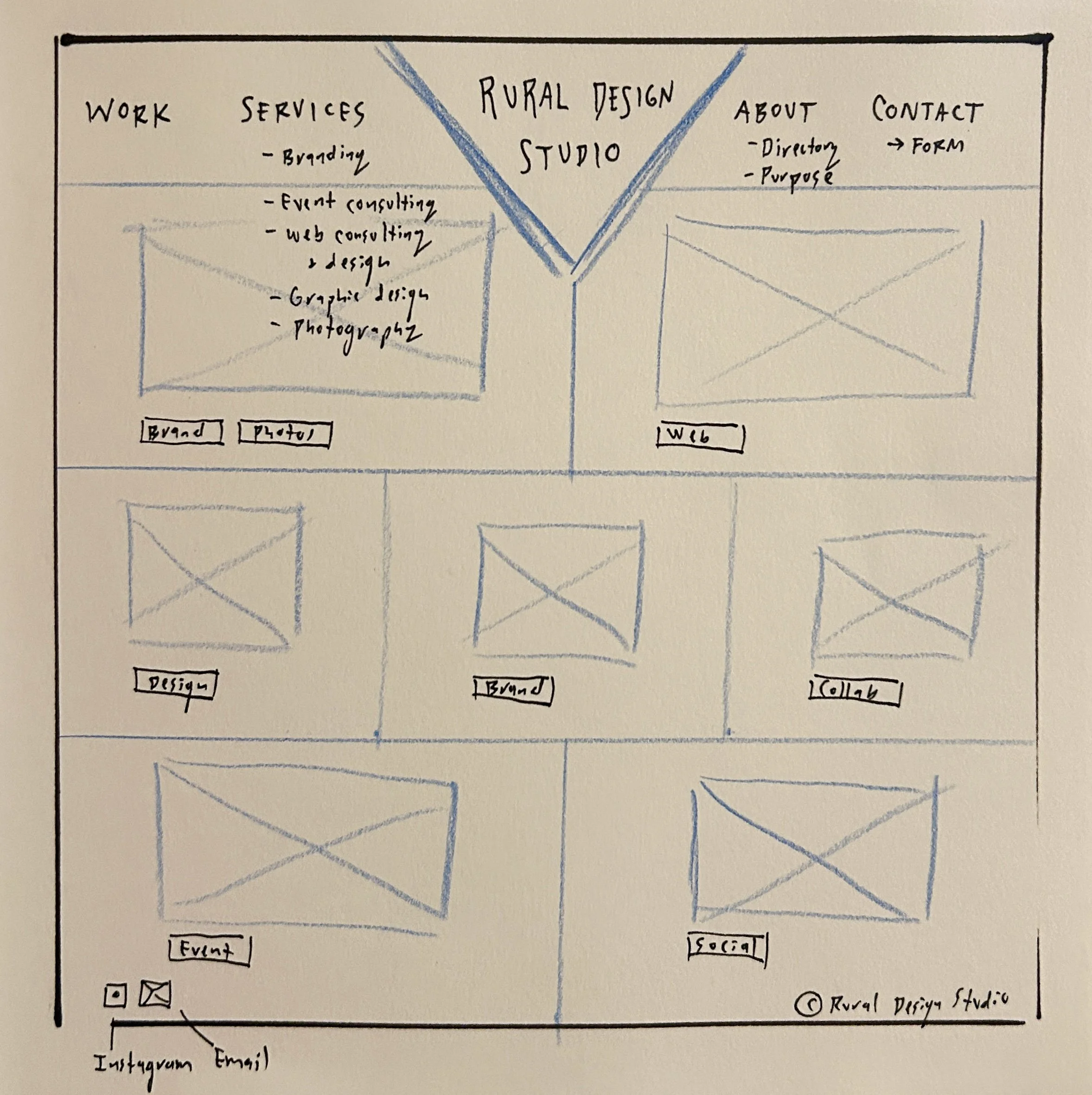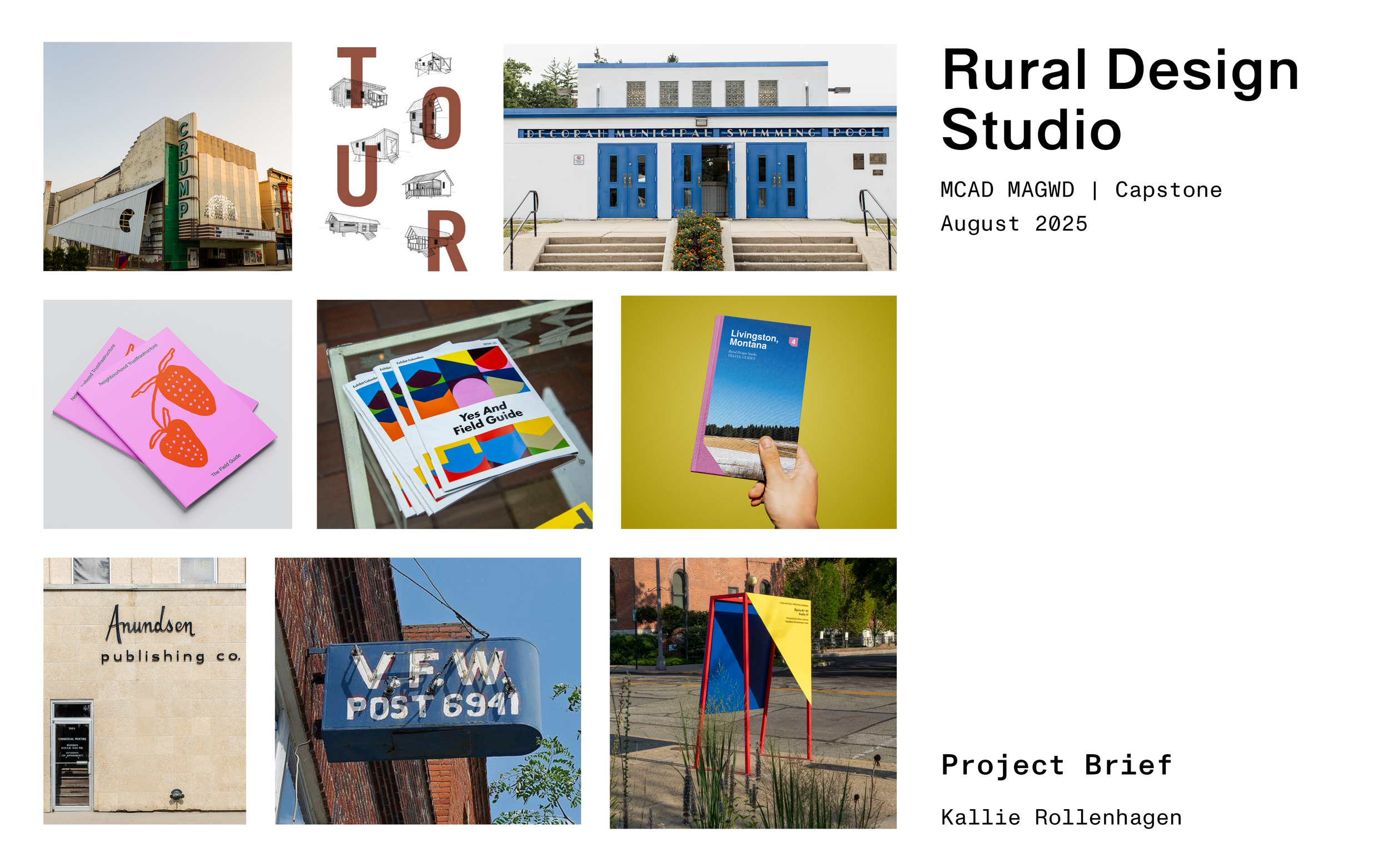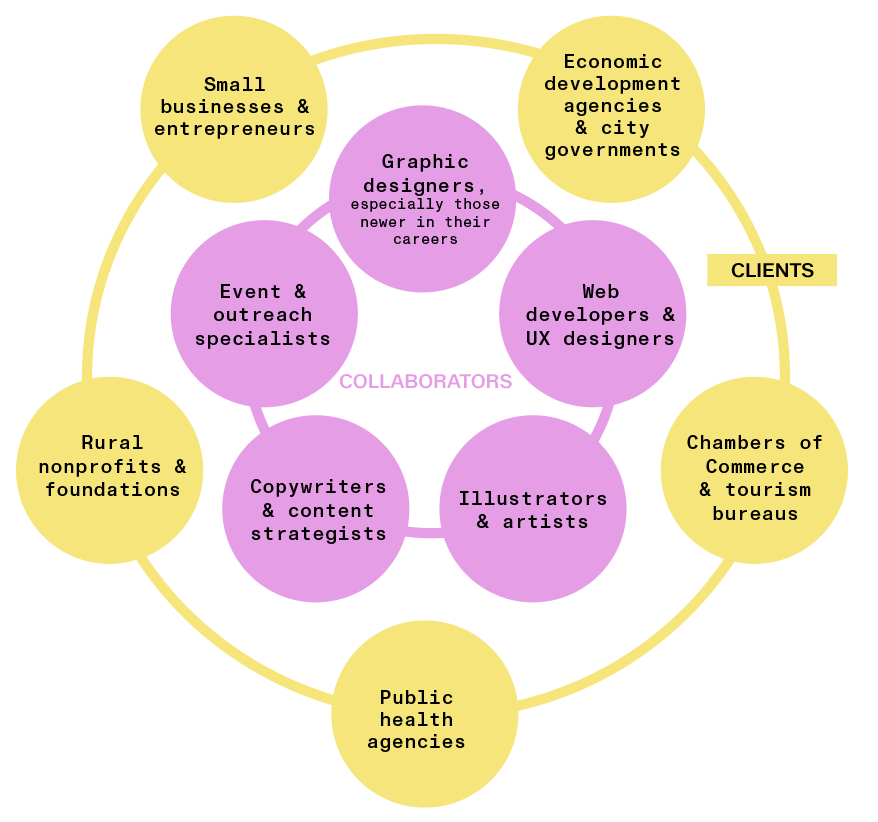It’s hard to believe I’m done! I didn’t expect to get so emotional after wrapping up my presentation, but I definitely cried last night. Mostly, I was overwhelmed with gratitude for all the support I’ve received the past few years, from my MCAD peers, professors, my husband and friends.
Read MoreWeek 9: Website prototype progress
Okay, I’m crawling out of vacation mode! This doesn’t quite feel at the 80–90% goal post, but I was able to make some progress on my Figma prototype, which at this point, feels like the goal I’m aiming for on the website front.
Read MoreWeek 7: Website mockup, early days
I’ve started building the Rural Design Studio website design in Figma; here are the working files. I’ve definitely been encountering some Figma cobwebs, so it’s been a little slow going, but it’s also been fun to see this brand start to live out in web context!
Read MoreWeek 6: Updated Project Plan
Above is my updated project plan. The biggest change this reflects is my decision to start with the Rural Design Studio brand platform, rather than the website prototype. I am still sticking with the idea that the baseline for my website will be a Figma prototype, and the ideal an actual live and developed website. This is something I’m having a hard time assessing how much time I’ll need, especially since I want to simultaneously have some other collateral created, at minimum, a diner menu of services.
Read MoreWeek 6: User Feedback
To get feedback on my prototype — a brand platform for the Rural Design Studio — I emailed eight rural creatives, a mix of folks who could be clients, collaborators or both. At this point, I’ve heard back from four of them.
Read MoreWeek 5: Self Reflection
As we wrap up week 5, here is where I am at with my prototype, a brand platform for the Rural Design Studio. Reviewing the capstone requirements, below is my self-reflection on progress made and work still to be done.
Read MoreWeek 4: Prototype progress update
I made good progress on my prototype punch list:
I found a way in Illustrator to amend the triangle shapes in the logo to be a bit “rougher" to make the bumpiness of the logo type.
I did a lot of font exploration and landed on a variable primary typeface: Marfa Variable by Dinamo.
I migrated my entire presentation to Figma for ease of embedding web prototypes later on; see the embedded brand platform below.
To that end, I mocked up a couple of splash screens to show how the variable brand mark could work.
I ended up iterating on color even further, to have some options to show my user focus group, and to a recommendation from Lafe, showed all three color palettes mocked up.
I made some small updates to the other sections of the brand platform and added a couple more mockups.
Some logo sketches, with color applied
Week 3: Proof of concept, outreach plan
After submitting my initial brand platform for the Rural Design Studio, I received some good feedback from classmates. So, my punch list for now as I move this part of the prototype to completion:
Clean up the brand platform, likely moving forward with color palette A.
Identify a secondary type.
Refinements to the logo, see if I can soften the shapes.
Move this into Figma for ease of importing site prototypes once I get there.
Ideally, mockup animation of the dynamic brand mark.
Get input from users.
To that last point, the folks I’m planning to share this with are:
Courtney: Rural artist and Chief Mission Office at Community & Economic Development Associates, a nonprofit that works on rural development
Melissa: Rural artist, Artistic Director at Lanesboro Arts, ED and founder of Mainspring, a rural arts and culture nonprofit
Lindsay: Rural artist and board member at Mainspring
Katie: Marketing director of a rural economic development foundation
Week 2: Plan + Prototype
This week, I spent some time sketching out a loose schedule for the semester as part of a larger project plan, starting a research doc, and then working on a moodboard for the brand identity and a rough sketch of a homepage as I move toward a week 5 prototype.
15 weeks will go fast! This is a best case scenario timeline, and very subject to change.
US Postal Service Art Deco type, vintage diner menus, patchwork quilts, weathered and loved space textures, and contrasting color palettes are offering a starting point as I start design.
A loose start of a homepage wireframe. This should be a fairly shallow site, with more time spent on design than site architecture.
Week 1: Project Brief Update
Based on some helpful feedback from classmates, as well as Lafe, I’ve made some adjustments to my brief:
Refined my hook: Design of and for rural communities.
Added to keywords.
Added to clients and collaborators.
Clarified deliverables.
Added to my research plan.
Reformatted research and audience pages to be more visual.
A question raised was related to the politics of design, especially design driven by “outsiders,” even if they have “moved in.” Related to this, there is the question of what makes design “good” or “necessary”? These questions underscore the need to have research demonstrating the value proposition of design, especially graphic and web design. What rural initiatives have benefited from effective branding, marketing, and outreach, and how did design help? What are some case studies I can point to, especially ones that transcend political lines?


